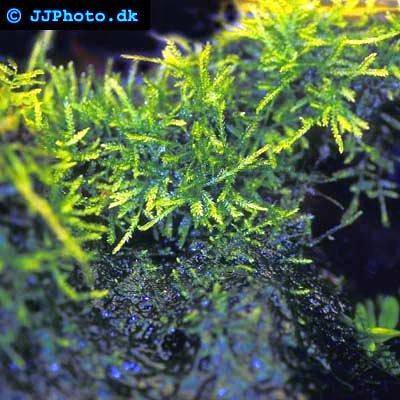Complete Guide to Growing Java Moss in Aquariums
Quick Links - Table of Contents
Brief Description
This page provides a complete guide on growing Java Moss (Vesicularia dubyana) in aquariums, covering everything from ideal water conditions to maintenance tips. Learn how Java Moss can enhance your tank's ecosystem by improving water quality and providing shelter for fish fry. Explore additional details and insights by visiting our Vesicularia dubyana profile. We invite you to share your experiences and ask any questions about Java Moss in the comments section below!
Introduction to Java Moss
Vesicularia dubyana, commonly known as Java Moss, is an aquatic plant from the Hypnaceae family. There is some debate about its scientific classification, with Taxiphyllum barbieri being another potential name. Java Moss is known for its versatility and low maintenance, thriving on a variety of surfaces with minimal care.
This plant grows in a dense mat of stems covered with tiny, olive to dark green leaves, each only about 4 mm (0.16 inches) long. Due to its fine texture, the leaves are often not immediately noticeable unless examined closely. Java Moss develops rhizoids, which are small, root-like structures that anchor the moss to objects. Unlike true roots, rhizoids do not absorb nutrients; their primary function is to provide attachment. This makes Java Moss a popular choice in aquariums due to its ease of cultivation.
Natural Habitat
Java Moss (Vesicularia dubyana) originates from several regions in Southeast Asia, including India, Java, and Malaysia. This hardy aquatic plant is well-adapted to a variety of environments. In its native habitat, Java Moss is often found in both terrestrial and aquatic settings. It commonly grows in humid, shaded areas along riverbanks, where it clings to rocks, tree trunks, and other surfaces.
Despite its classification as an aquatic plant, Java Moss can thrive even when partially exposed to air. It frequently grows above water, where it may form dense mats on rocks and trees, showcasing its adaptability. This ability to grow both submerged and emersed makes Java Moss a versatile plant that can handle varying levels of moisture and light, making it well-suited for diverse aquarium setups.
Water Conditions
Java Moss is remarkably resilient and can thrive in a wide variety of water conditions, making it an ideal choice for both beginner and experienced aquarists. This plant adapts well to different environments and can grow in:
- Freshwater to mildly brackish water, tolerating slight salinity changes
- Low light conditions to full exposure to bright, direct sunlight
- A broad temperature spectrum, suitable for tropical to temperate tanks
- Clear water as well as slightly murky or nutrient-rich water
Java Moss performs especially well in tanks with moderate water flow. The dense, bushy structure of the plant tends to trap debris, but a gentle current can help prevent detritus buildup by washing it away. This makes Java Moss perfect for aquariums with filtration systems that create a slight water movement. It can also thrive under varying light conditions, though low light is generally preferred to prevent unwanted algae growth. When exposed to brighter lighting, algae may proliferate, competing with the moss for nutrients.
Java Moss can survive in temperatures ranging from 15°C (59°F) to 30°C (86°F), but it grows best in the range of 21°C to 29°C (70°F to 85°F). Additionally, it can tolerate a wide pH spectrum, from slightly acidic (5.0) to mildly alkaline (8.0), allowing it to fit comfortably into most freshwater aquarium setups.
Caring for Java Moss
Java Moss is an excellent addition to aquariums, particularly in setups with higher levels of nitrite, excess food, or waste. It thrives in such conditions, making it a practical choice for species like Betta. By helping to metabolize nitrites, Java Moss can reduce the frequency of tank cleanings, but it’s important to note that it doesn't eliminate the need for regular maintenance. Care should be taken to ensure the moss doesn’t overgrow and crowd the tank, as it consumes oxygen at night, which could potentially suffocate fish.
Though Java Moss needs some routine care, it is relatively easy to manage. To control its density, simply pull out clumps of moss, much like you would with weeds in a garden. Thinning it out every couple of weeks won’t harm the plant and keeps it manageable. If algae begins to invade the moss, remove the sections affected by the algae to prevent it from spreading. For persistent algae issues, safe algae control products can be used without harming the moss or other aquarium plants.
Since Java Moss has no true roots and grows in various directions, securing it to objects like rocks, logs, or driftwood requires using thread or string. Over time, usually within a few weeks to a few months, the moss will naturally attach itself to these surfaces, after which the string can be removed.
Benefits
Java Moss provides numerous advantages, particularly in breeding tanks. Its dense growth offers an ideal hiding spot for fish fry, protecting them from larger predators. This makes it an excellent addition to tanks with livebearers, who are known to sometimes eat their young. Mature fish, such as the Kuhli Loach, can also take refuge in the thick moss growth, staying safe from larger predators that can't enter these confined spaces. For egg-scattering fish, Java Moss acts as a protective environment, helping keep the eggs safe until they hatch.
In addition, Java Moss promotes a healthy ecosystem by supporting the development of infusoria, a crucial food source for newly hatched fry. Its dense foliage also aids in maintaining water quality, as it helps absorb nitrites and keeps their levels low, which in turn reduces the risk of dangerous spikes between water changes.
Picture

Sources
- Aquarium Plants Manual by Ines Scheurmann
